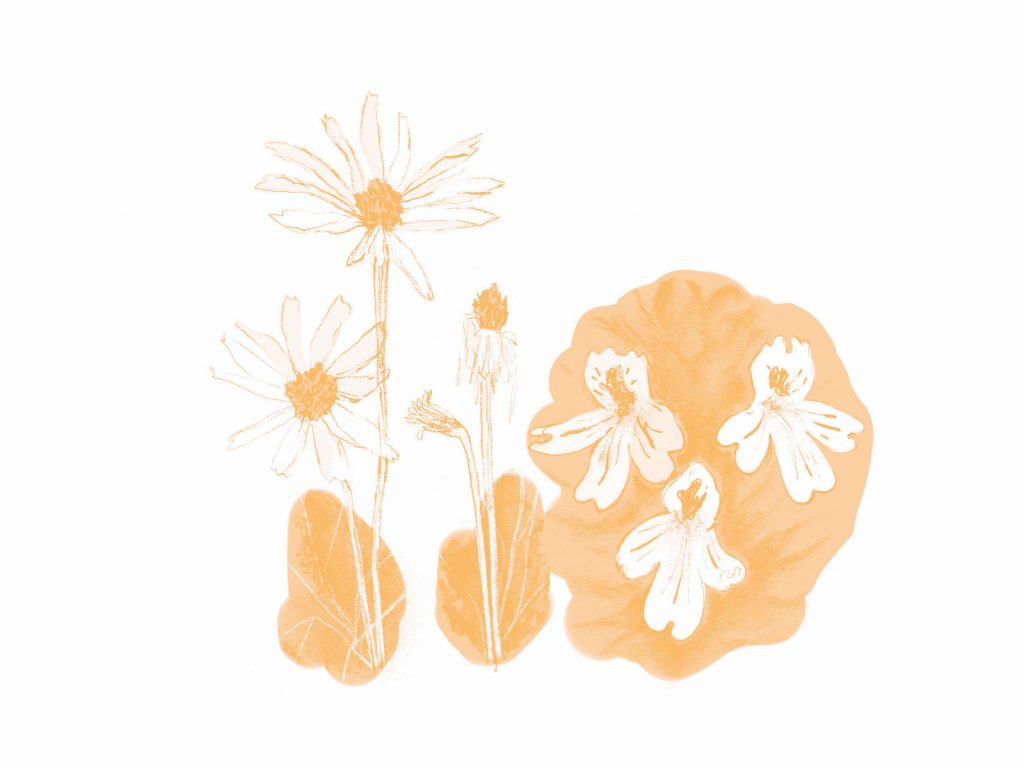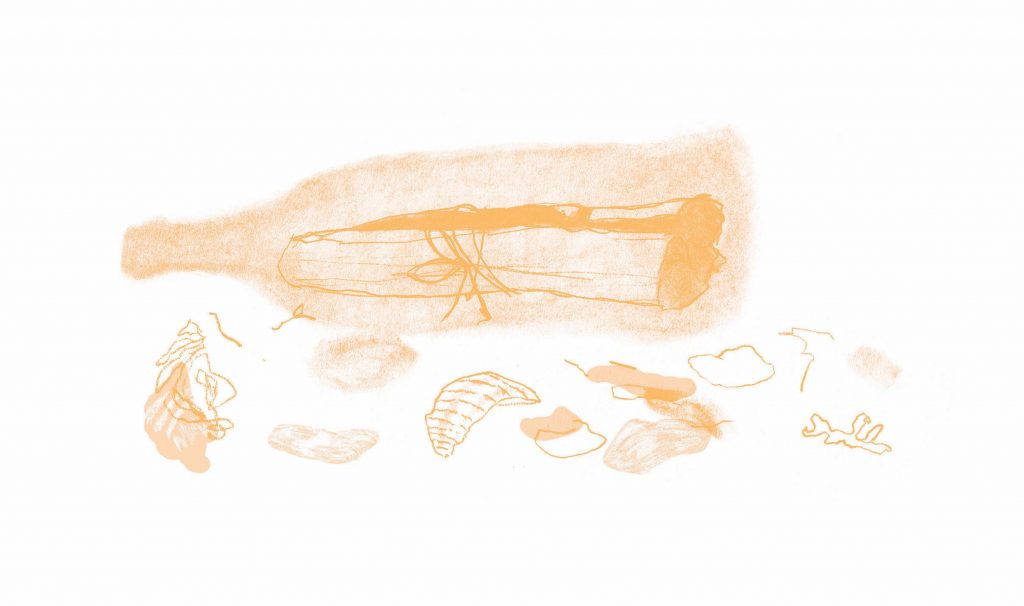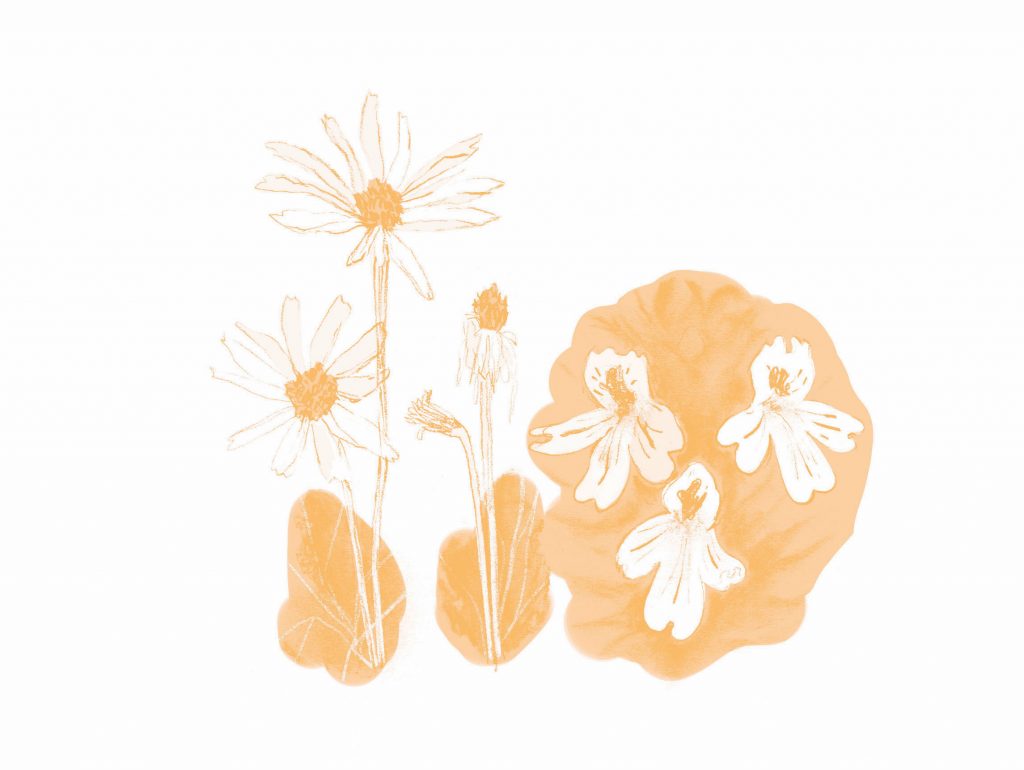This conversation appears in our Spring 2021 issue. Subscribe now to receive a copy in your mailbox. Click here to read the rest of the Paul Celan folio.
When I first met the poet and translator Pierre Joris as a colleague at the University of California, San Diego, in the 1990s, he was already deep into his engagement with Paul Celan’s work. He has now been wrestling with Celan for more than 50 years. In 2014, he published the collection Breathturn into Timestead, which collects his translations of Celan’s later poetry in a beautiful bilingual edition. Last year, the centennial of Celan’s birth and the 50th anniversary of his death, marked the completion of Joris’s work on Celan, with the release of two books. One is Memory Rose into Threshold Speech, the companion volume to Breathturn, which contains translations of Celan’s first four books. The other is Microliths They Are, Little Stones, a collection of the poet’s fragmentary prose, which exhibits the lyrical thinking—and the metamorphoses of words, sentences, breath-breaks, and heart-music—that made Celan’s life an extended meditation on the human need for roots.
Pierre’s interest in language emerged from the multilingual context of his youth. He was born in France and raised in Luxembourg, where he grew up speaking the Germanic language Luxembourgish. He learned German in school, alongside French, Latin, English, and Spanish. After early attempts to compose poetry in French, he chose to write primarily in English, the language whose contemporary poetry most excited him; in addition to his translations of Celan and other poets, he has published many volumes of his own poetry and essays.
It was a pleasure to correspond with Pierre about the process of translating Celan’s inward and inventive poetry, the poetic and personal background that led him to this project, and what Celan might mean to us now.
Fanny Howe: You spent so many years on these poems, so many hours alone with Celan. Did his work affect you emotionally? Have you come to see the world and hear it differently?
Pierre Joris: I have—but I was affected most absolutely by my and Celan’s first encounter. In 1961, when I was in high school, my German literature teacher brought in a peripatetic actor who gave a reading of contemporary German poetry. I already had a slight interest in poetry, having discovered Gottfried Benn’s Morgue and some of the modernist French poets. First he read some Karl Krolow, Günter Eich, Heinz Piontek—the “Bestandsaufnahme” poets, whose spare, prosaic language tried to reinvent a possible German poetry, a poetry of ruins, after World War II. Somewhat enjoyable but not much more, unless you were a German having to deal with your past, perhaps. And then he read Paul Celan’s “Todesfuge” [“Deathfugue”]. The poem went through me like a knife through butter, cut me open, laid me out, flayed me. It may be the one absolute epiphany I have ever experienced. Reflecting on this experience over the years, I came to the conclusion that it was neither only the beauty of the music (the poem’s melodic fugal construction) nor the obvious horror of the content (the exterminated bodies of the Jews going up in smoke to be buried in the air) that created this effect. No, it was the abyss opened by the paradoxical combination of these two elements into which I fell; it was the contradictory doubleness of that chiasmus that tore me apart.
When I dropped out of medical school in 1966 and then came to the US the next year to study at Bard College, I carried with me two French philosophy books and one German poetry book: Paul Celan’s Atemwende, which I would translate as Breathturn under the supervision of Robert Kelly from ’68 to ’69. (Celan called translation “Fergendienst”—ferryman’s labor—and that image has always been with me, as I literally schlepped his books as they came out, across the ocean from Europe to North America to translate them.) That first translation was a strange, nearly arrogant effort. There I was, 20 years old, trying to learn English to become a writer in that language, while at the same time attempting to translate the most difficult contemporary German language poet into English. But that may in fact have been a productive situation: Celan was reinventing German to create a new post-Nazi poetry, and so the translator also had to invent a new English. It was an amazing apprenticeship, learning American English—listening, on Robert Kelly’s advice, to baseball radio commentators, and reading the Beats and then Charles Olson and company—while trying to find ways to get Celan’s very private German into English. I guess that was the alchemical alembic in which the language of my own poetry was forged.
In the ’70s I had a long exchange with Clayton Eshleman, who was then translating the late work of Antonin Artaud, about whether Celan and Artaud represented the end of Europe, or the beginning of something new. At that time I argued that they were the end of something, but now I am confident that Celan, at least, was both simultaneously.
“The poem went through me like a knife through butter, cut me open, laid me out, flayed me. It may be the one absolute epiphany I have ever experienced.”
FH: There is such a sense of failure in the Western world now. I wonder if you see a movement forward in the poetry of Celan? If he is the ferryman, are we in safe hands?
PJ: Yes, I think we can locate such a “movement forward” very clearly in Celan’s poetry. We see it in the shift—Celan’s own word for it is “Wende,” meaning “turn,” as in the title Atemwende—from the lush, Rilkean-romantic, surrealist verse he writes from the late ’30s until the early ’50s mutates into the more metaphor-weary, structurally complex and self-reflecting, open-field poetry of the second part of the 20th century.
The clearest way to see this movement forward is to compare two Celan poems: his aforementioned best-known one, “Deathfugue,” composed in 1945, and “Engführung” (“Stretto”), composed in 1958, which is actually a sort of recasting of “Deathfugue.” For Celan, I believe the need for this turn forward had its roots in two factors. The first was the misuse of “Deathfugue” in Germany, where it was extremely successful, widely anthologized, and trotted out as proof of the supposedly successful Überwältigungsprozess—the process of having overcome the trauma and guilt caused by the Nazi past. But just as egregiously, it was studied in schools from a purely formal perspective, with scarcely a reference to its content. A review in which the poet and critic Hans Egon Holthusen, an ex-SS officer, called the poem, essentially, a gorgeous, dreamlike, surrealist fantasy with no reference to the actual world convinced Celan to withdraw it from any further anthologizing, and to rethink his poetics altogether. The second factor was the false accusations of plagiarism by the widow of the poet Yvan Goll, which caused a psychic distress that eventually triggered the illness that plagued him until his suicide in 1970.
So in 1958, Celan rewrites “Deathfugue” as “Stretto”—note the fugal reference in both titles. The latter, the longish poem that closes Speechgrille, exhibits a poetics that makes such recuperation impossible: It eschewed the beautiful images and melodic musical core of “Deathfugue,” for a much more sober, sparse language presenting its materials in brief, often one- or two-word verses. Given “the sinister events in its memory,” Celan wrote in an essay of that period, the language of German poetry had to become “more sober, more factual . . . ‘greyer.’” This greater factuality checks a core impulse of the lyrical tradition—its relation to the lyre, to music. Celan sought “a language which wants to locate even its ‘musicality’ in such a way that it has nothing in common with the ‘euphony’ which more or less blithely continued to sound alongside the greatest horrors.” The direct effect of giving up this ‘euphony’ is to increase the accuracy of the language: “It does not transfigure or render ‘poetical’; it names, it posits, it tries to measure the area of the given and the possible.” The new poem also widens the historical perspective: Hiroshima now stands besides Auschwitz as determinants of the recent horrors.
All of this spoke to me—the young man, not-yet-Celan-translator, budding poet, exploring a world where, after the colonial wars in Algeria and elsewhere, the war in Vietnam had begun to shape our generation’s relation to the world. So I see Celan’s “turn” as a movement forward in that it gave us a new way of seeing and trying to articulate our own moment in history, and looking ahead.
FH: The poems are in many ways like stones carved by natural forces, including history. They are so self-contained and hard and seemingly hurled from a mystery.
PJ: I love your geological image. Yes, this becomes more and more true for his poetry over the course of his life. Celan was also interested in botany, which he began to study in high school. In his poems there are no poetically generic pretty “flowers,” but instead accurately observed and placed actual plants—think of the healing plants arnica and eyebright that open “Todtnauberg,” his poem about his encounter with Martin Heidegger.
Today, as we are trying to rethink our condition in the so-called Anthropocene, he offers us ways of thinking about re-placing homo-not-so-sapiens among the orders of nature, be they mineral, vegetable or animal, and de-hierarchizing them.

FH: I am very interested in the poet’s search for something that doesn’t exist. I think of Friedrich Hölderlin and his many drafts of poems, which reveal a devoted focus on finding the figure behind or inside the poem. Celan uses the same images repeatedly, and in a way the poems themselves are like separate drafts of a single poem. Did Celan usually write several drafts, or did he write like a note-taker, fast and furious? And I would love to know what you think of repetition as relentless failure, wild confidence, or both.
PJ: Relentless failure demands wild confidence—otherwise you’d stop after one failure and do something else! But Celan’s writing habit seems to have been to compose a number of drafts—handwritten, typed, retyped and revised by hand, mainly tightened. He worked at it obsessively.
Much criticism of the late work claims it is characterized by a Verstummen—a falling silent—and some even suggest it amounts to a poetic failure, because the poems are much shorter and sparer. But that’s a silly trompe l’oeil: The poems may be brief, but Celan wrote many more of them in his last years than in any other time in his life. This era was no failure; it simply embodied a different poethics.
FH: You have not embellished his poems—you have not made them more beautiful—and this is truly admirable, the resistance to hanging bells and whistles on the lines.
PJ: Embellishments make for bad translations. The task is to write the foreign language into the “target” language, to open the latter up to new possibilities—not to tame and repaint the work into that language. This may make the translated work somewhat less elegant than the original, even somewhat ungainly. No problem. That most famous of all compliments to the translator, that a translation “reads as if it had been written in this language”—i.e., the fact that it is a translation is completely hidden—is to my mind the worst thing you can say about a translation. (I could insert here a long disquisition on translation as colonization, but this isn’t the time or the place.) I used to tell my students that if a poem reads more easily in the translation than in the original, it’s a bad translation.
FH: As you worked on these translations over the decades, how were you able to sustain such an identification with so tormented a man, and not fall apart yourself?
PJ: Identification would have been impossible—or lethal. I never met Celan, though I could have knocked on his door in the summer of 1969, when I returned to Europe with Breathturn done. But I felt too much awe. I saw myself as a young, fumbling poet who hadn’t really anything to say to him, except to express admiration. I also knew that he was a difficult, psychically troubled man. So I didn’t even try. In the ’70s I got to know Gisèle Celan-Lestrange, his widow, and today I am in touch and on good terms with their son, Eric.
FH: Is it possible to be influenced by Celan as a poet when his poetry was forged in a specific hell?
PJ: Obviously he is inimitable, which of course doesn’t preclude influence. There came a time, in the mid-’70s, when I had to consciously deal with the continuous presence of his work, and thus of him, in my life as a poet. My solution was to write a longish poem, an homage to Celan, a writing-through—and, I hope, beyond—his work, that I called “The Book of Luap Nalec” (i.e., “Paul Celan” spelled backwards), which appears in the volume Breccia (Selected Poems 1972–1986).
But I was also lucky in that my choice of language was American English rather than the German I could have picked, and that therefore the major influences on my work were contemporary American poets, from the Beats to the Black Mountain poets, and beyond. This commitment to write in my fourth language is a kind of defiance of Celan, who claimed that you cannot write poems in a language that is not the mother tongue. He wrote that in any other language, “the poet lies.” I understand that this was so for him, for specific historical and familial reasons—his mother insisted on High German as the cultural language in an area where Romanian, Yiddish, and Ukrainian were also spoken, and where the local German was a very Austrian-inflected version of the language, the language that on the other hand is also that of his mother’s murderers. So he has to write in it to stay true to his mother’s wishes, but simultaneously he has to work at denazifying the language itself.
But in my view, his suggestion is not a universal truth. I have always been a believer in the multiple—when it comes to the godhead, to influences, to languages, to whatever—so I deny the need to choose between one or the other, and insist instead on both and.
“This commitment to write in my fourth language is a kind of defiance of Celan, who claimed that you cannot write poems in a language that is not the mother tongue.”
FH: World War II appears in many works of art—for instance, in the films of Elem Klimov and Larisa Shepitko—as bleak and agonized, but not free of the redemptive Christian vision. But it is different for Celan.
PJ: Yes, his is a Jewish vision. He had a fraught but enduring relationship to his own Jewishness. In one of the prose fragments collected in Microliths, he writes, “My Judaism: what I still recognize among the ruins of my existence.”
At certain moments in his life, he showed a profound interest in Jewish mysticism—as profound as his abiding political passion for a vision of social justice, which he acquired early on from reading thinkers such as Peter Kropotkin and Gustav Landauer. But he kept a major skepticism alive concerning religion, telling one friend, the poet Nelly Sachs, that he “hoped to be able to blaspheme until the end.” In the poem “Tenebrae” he writes, “Lord, / pray to us”—reversing the traditional direction of prayer, because, he goes on, “it was blood, it was / what you spilled.” He ends the poem by repeating: “Pray, Lord. / we are near.” Still, I think there remains in his work the possibility of the—of a—Shekinah, a divine presence . . .

FH: The book of small treasures, Microliths, gives a spectacular vision in sea glass, dazzling on the page. I wonder if the hasty lines of notebooks are the messages in the bottle tossed into the sea, and if in their randomness they float to a further shore of understanding.
PJ: Those pieces of prose—fragments, counterlights, broken-off stories, plays, meditations, poethics-fragments, unsent letters, an absolute amazing bric-a-brac of genres—completely seduced me when I first read them. I didn’t get to see them until the German edition of Microliths came out—to nearly everyone’s surprise, I’d wager, in terms of just how much prose there was—in 2005. Before this all we had were the poems themselves—well-finished, rounded, formally coherent in very tightly constructed book-forms, even as they became more adventurous after the turn. In fact, I’d argue that the poems show an amazing solidity despite what they came out of—the (post-)Holocaust—and where they went to: his own psychic breakdowns. The messages in the bottle are the poems, at least as far as Celan himself is concerned, given that he defined the poem as exactly that; the stoppered bottle that can survive drifting in the stormiest sea is a near-perfect image of the containing form of the poem. My worry—I don’t know if it was Celan’s, too—is, if we follow his metaphor to the end, whether there will be a human-inhabited island left when the bottle is finally washed ashore. Or a homo sapiens able to read such messages.
FH: I feel that I am falling backwards into a void when I read Celan, but that he is there both during the fall and inexplicably during the rescue. His poetry is holy.
PJ: It is a life-changing and -sustaining experience indeed. But I wouldn’t claim it as “holy.” Remember it is Celan who asked God to pray to us. If there has to be “holiness,” let it be—as it was for Baruch Spinoza, who appears in Celan’s “Pau, später” [“Pau, later”]—everywhere and in everything.
Fanny Howe’s most recent publications are Night Philosophy (Divided Press, Brussels) and Love and I (Graywolf Press). She is professor emerita in literature at the University of California, San Diego.
The post Celan’s Ferryman appeared first on Jewish Currents.




